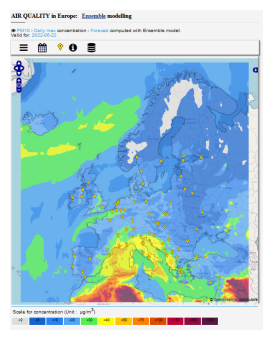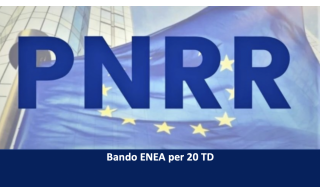ENEA's sistem MINNI is officially part of UE Copernicus
Starting from 15 June 2022, ENEA's atmospheric pollution analysis and forecasting system, MINNI, is officially part of the Copernicus Atmospheric Monitoring Service consortium (CAMS2_40), managed by the European Center for Medium-range Weather Forecasts(ECMWF) on behalf of the European Commission.
CAMS brings together the leading European teams developing numerical models for air quality. Through this consortium, regional air quality forecasts are delivered daily, and they cover the following 4 days.
The models included in the consortium are 11: CHIMERE from INERIS (France), EMEP from MET Norway (Norway), EURAD-IM from Jülich IEK (Germany), LOTOS-EUROS from KNMI and TNO (Netherlands), MATCH from SMHI (Sweden ), MOCAGE from Meteo-France (France), SILAM from FMI (Finland), DEHM from AARHUS UNIVERSITY (Denmark), GEM-AQ from IEP-NRI (Poland), MONARCH from BSC (Spain) and MINNI from ENEA (Italy) . MINNI is based on the chemical-transport model FARM.
The ensemble products cover a range of pollutants including those regulated in the European Union: ozone, nitrogen dioxide, sulphur dioxide, and fine particulate matter PM2.5 and PM10. The forecasts and analyses are provided on a regular grid with a resolution of about 10km by 10km over a large domain encompassing Iceland and the whole Mediterranean basin.
ENEA's participation in the CAMS Regional Air Quality Production started officially in 2018, with a 3-year "benchmark" period, for setting-up and operating the forecast system in parallel with the operational real-time service. At that time, MINNI had been working for years supporting the Italian Ministry of Environment and running on a national domain. In 2015, it was first switched to forecasting mode on a national basis (FORAIR-IT, starting from a previous suite developed by Arianet s.r.l, Qualearia).
The advantage of an ensemble over a single model is that it benefits from a set of forecasts of similar general skill. The slight differences between models allows assessment of uncertainty: the more similar the individual forecasts, the lower the uncertainty. Uncertainty information is essential for CAMS users, for decision making within the agencies managing air quality in the European Union.
As CAMS operates under stringent time-critical conditions (daily simulations,involving significant data flows in input and output), having 11 systems means also that the possibility of receiving several individual forecasts in time becomes more likely, making the ensemble more robust. Finally, as models are developed in different countries, the ensemble benefits from a wider range of expertise that would not be available in any single country.






